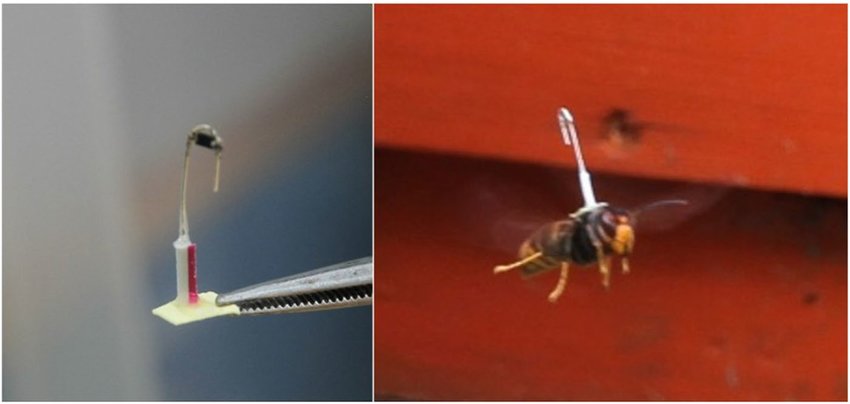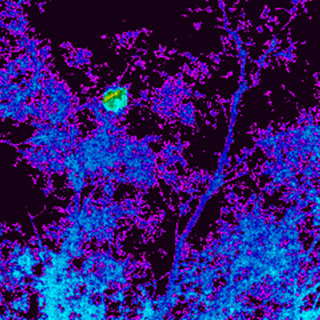 by Véto-pharma
by Véto-pharma The Yellow-legged hornet (Vespa velutina) poses a significant threat to our native bee populations. It’s essential not only to trap these pests but also to destroy their nests. Finding and eliminating these nests can halt the spread and cut off the threat at its source. However, dealing with these nests requires care, expertise, and the right methods.
Before diving into this article, have you taken a look at our earlier articles?

4. Thermic Imaging:
Hornet nests, teeming with activity, emit heat. Using thermal imaging devices, especially during cooler evening hours, can reveal the heat source of a concealed nest.

Human-Height Nests: Nests found at human height are relatively easier to manage. They can be encased in multiple plastic bags or containers and then frozen at -20°C (-4°F) for 48 hours, ensuring the hornets inside are killed.
However, many nests are located at higher elevations and are more challenging. Accessing these might require techniques such as pruning, telescopic poles, or even lifting platforms to reach the nest and apply a solution to exterminate the hornets. Regardless of the nest’s location, it’s crucial to engage specialized operators for the eradication. Attempting to destroy the nest alone is strongly discouraged.
Non-Chemical Destruction Methods:
Chemical Destruction Methods:
Please note that some of the chemical methods mentioned here may not be permitted in all countries. Expert nest removers will be well-versed in local regulations and will select the most appropriate and legal solutions for your situation.
Trojan Horse Technique:
An innovative approach involves using hornets to transport an active ingredient. The idea is to encase a pesticide in a matrix, only to be released when it reaches the nest due to specific conditions like temperature and salivary enzymes. One proposal, yet to be realized, is to transfer an entomopathogenic fungus (like Beauveria and Metharizium). Laboratory tests have been conducted, but field application is still pending.
Dealing with Vespa velutina nests is not for the untrained. Their aggressive nature, when threatened, can lead to multiple, painful stings. Even if you’ve detected a nest, it’s imperative to contact professionals to handle the removal. Pest control specialists have robust protective equipment, far surpassing the standard beekeeping suit, ensuring safe and effective nest destruction.
While Véto-pharma doesn’t offer direct solutions for nest destruction, we believe in equipping our community with knowledge. Understand the threat, use the best methods to combat it, but always prioritize safety. And remember, the best defense is a community armed with information.
 by Antonio Pajuelo
by Antonio Pajuelo  by Véto-pharma
by Véto-pharma Join the Véto-pharma community and receive our quarterly newsletter as well as our occasional beekeeping news. You can unsubscribe at any time if our content does not suit you, and your data will never be transferred to a third party!
© 2019-2025, Véto-pharma. All rights reserved